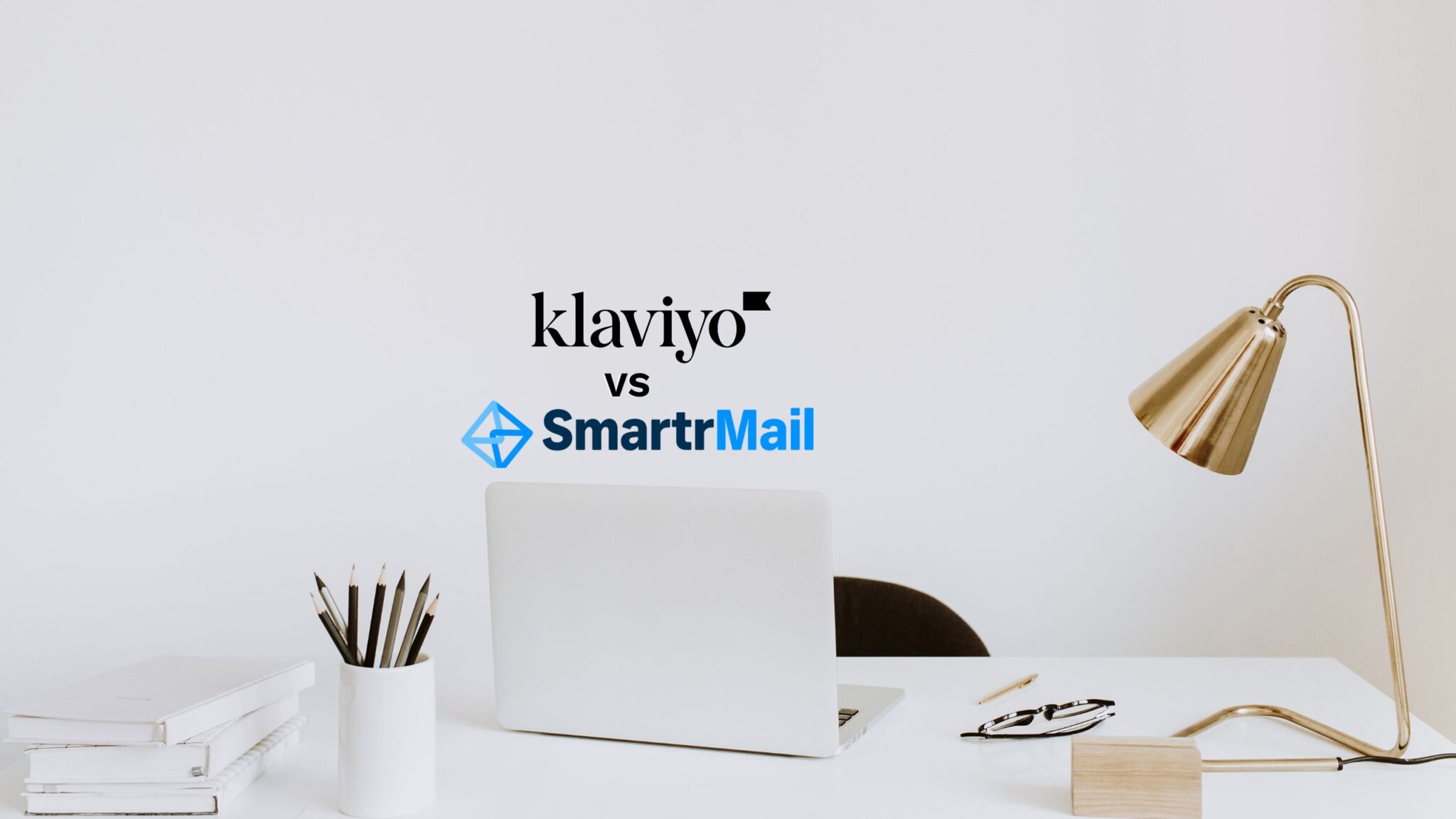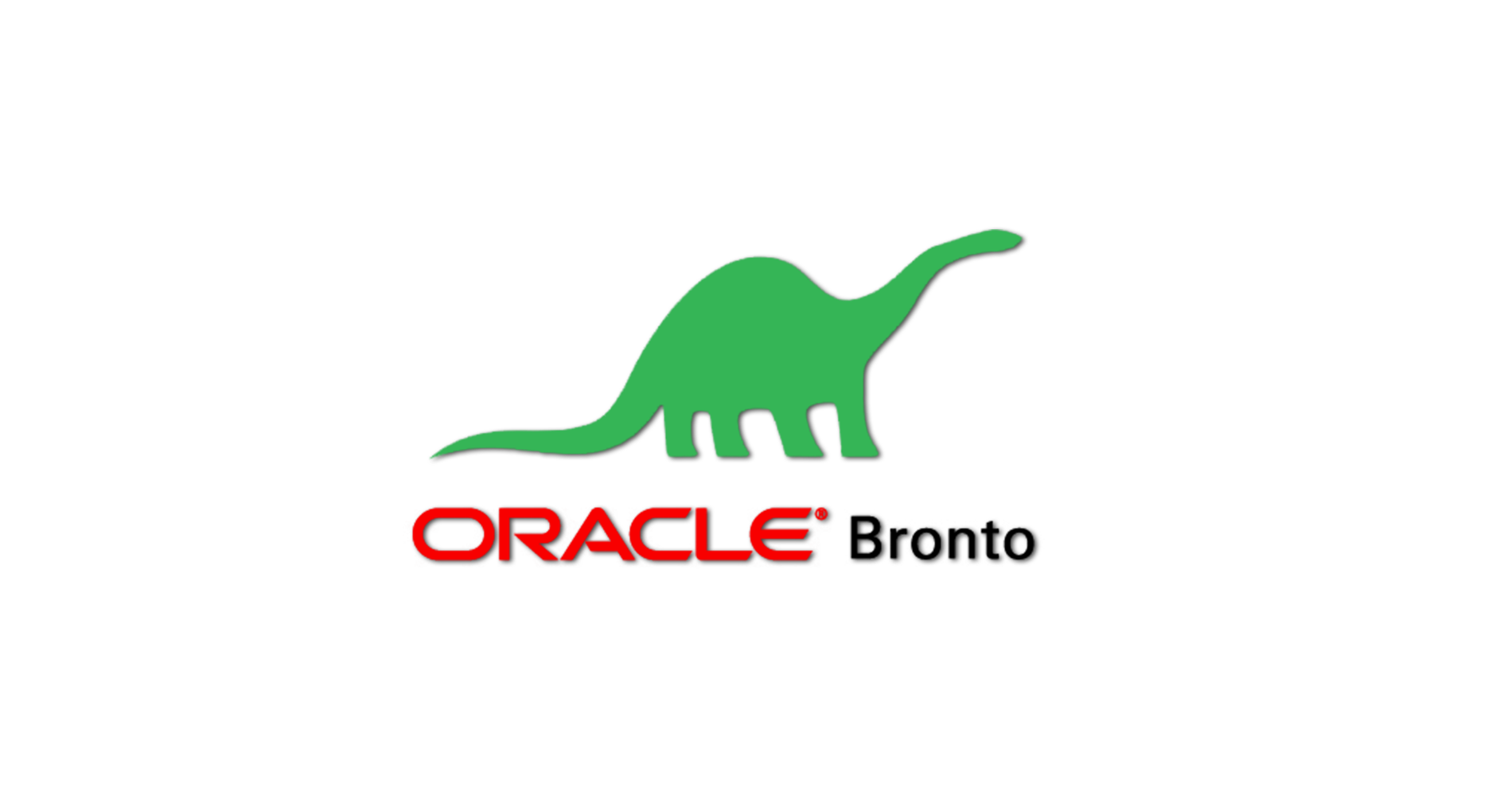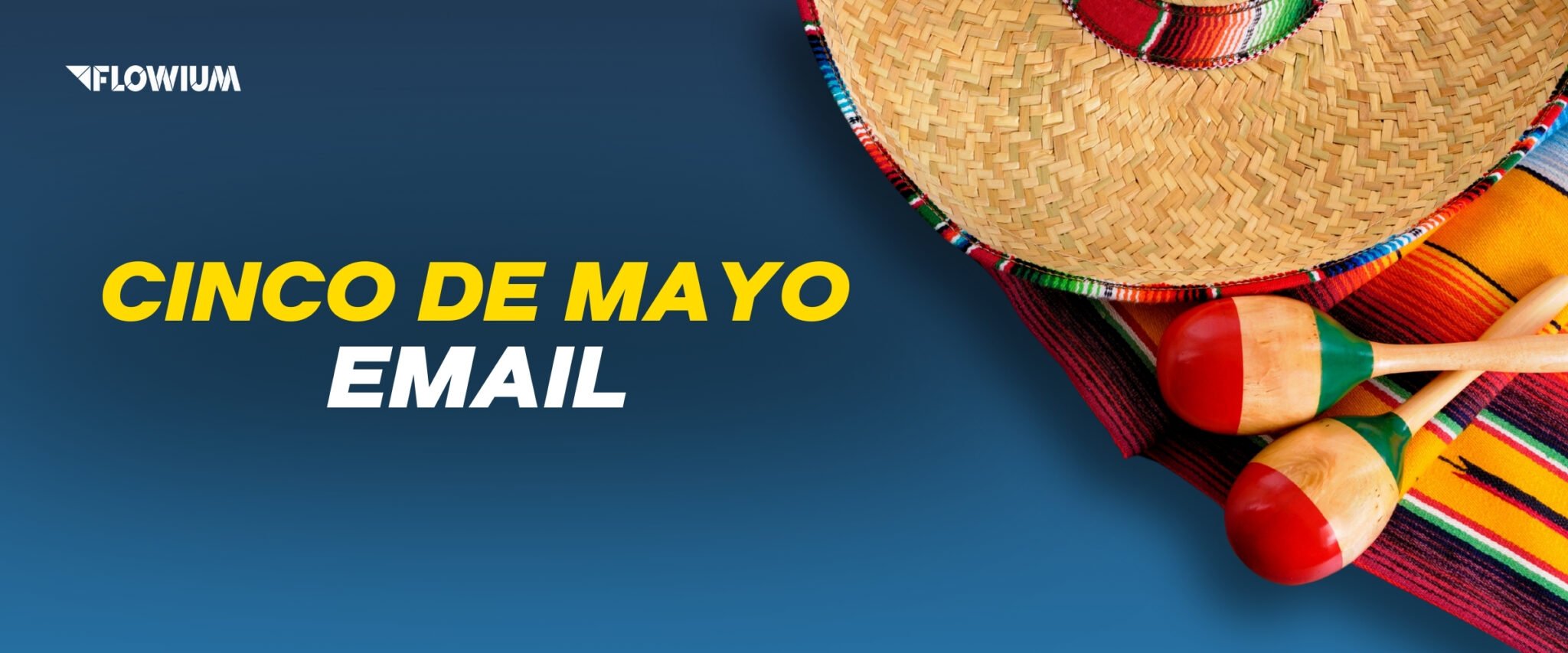One of the most important aspects to ensure the proper operation in ecommerce is order fulfillment. After working on marketing projects for various ecommerce businesses, experts at Flowium know how stressful and draining it might be to organize this process all by yourself. Thankfully, present-day online selling companies have an excellent option of using third-party logistics (3PL) to handle your order fulfillment duties and improve operational efficiency.
This guide will teach you all you need to know about 3PL so that you’re prepared to outsource your supply chain logistics.
What is Third-Party Logistics?
If you own an online store, you’ve probably heard of this term somewhere along the way of structuring your business. Now it’s time to fully define 3PL and dive deep into its absolute meaning.
Third-party logistics (3PL) refer to a practice when an ecommerce or retail business outsources the responsibilities of managing supply chain to an outside service provider specializing in inventory management, warehousing, order processing, shipping, etc.
Although the practice is relatively new, its use is growing as more and more online retailers see the advantages of contracting out their incoming and outgoing logistics needs.
3PL Meaning for Ecommerce
Many businesses across various industries use this kind of services, but since in our guide we focus on online sellers, let’s answer the question “What does 3PL mean?” specifically for ecommerce firms.
The third-party logistics meaning encompasses a wide range of services that enable online retailers to contract with an outside entity, often referred to as a third-party logistics provider, to handle both their outward and inbound logistical needs.
Inbound logistics in ecommerce is the procedure of receiving products from suppliers and getting them ready for delivery. However, the process of sending items out of a warehouse or distribution center is referred to as outbound logistics. All of these tasks are handled by an ecommerce 3PL. On behalf of its clients, 3PL provides warehousing, order fulfillment, and inventory management services on a national or international scale.
The primary benefit is that they can offer you an order fulfillment process that is more reliable and efficient than anything you could do on your own.
3PL Definitions and Terminology
The 3PL definition won’t be complete without drawing the line between this particular practice and other related terms. What we’d like to define here is the difference between it and a basic order fulfillment, as well as compare it to other types of logistics organization.
- Third-party logistics vs order fulfillment
These two operations are often confused, but they serve different purposes.
Order fulfillment companies manage the process of packaging and shipping orders directly to customers, ensuring timely and safe delivery. In contrast, 3PL companies handle the entire supply chain for their clients, including inventory management, warehousing, and shipping. Retailers often hire 3PL providers to outsource these logistics tasks, eliminating the need to operate their own warehouses or manage direct shipping.
- 3PL vs other types of logistics
3PL is a rapidly growing segment in the logistics industry, increasingly popular among ecommerce businesses of all sizes. However, many business owners are unaware of the various levels of logistics services: 1PL, 2PL, 3PL, and 4PL.
- 1PL
An ecommerce company handles all aspects of their own shipments, managing the transportation of goods directly to customers.
- 2PL
Mainly outsourced transportation services, where carriers like shipping lines or airlines handle the shipping of goods.
- 3PL
Businesses outsource significant parts of the supply chain, like warehousing, inventory management, and order fulfillment.
- 4PL
Management of the entire supply chain, from resources management to providing strategic insights through the use of advanced technology.
Each level represents a different set of responsibilities within the logistics process, making it important for ecommerce retailers to understand the distinctions.
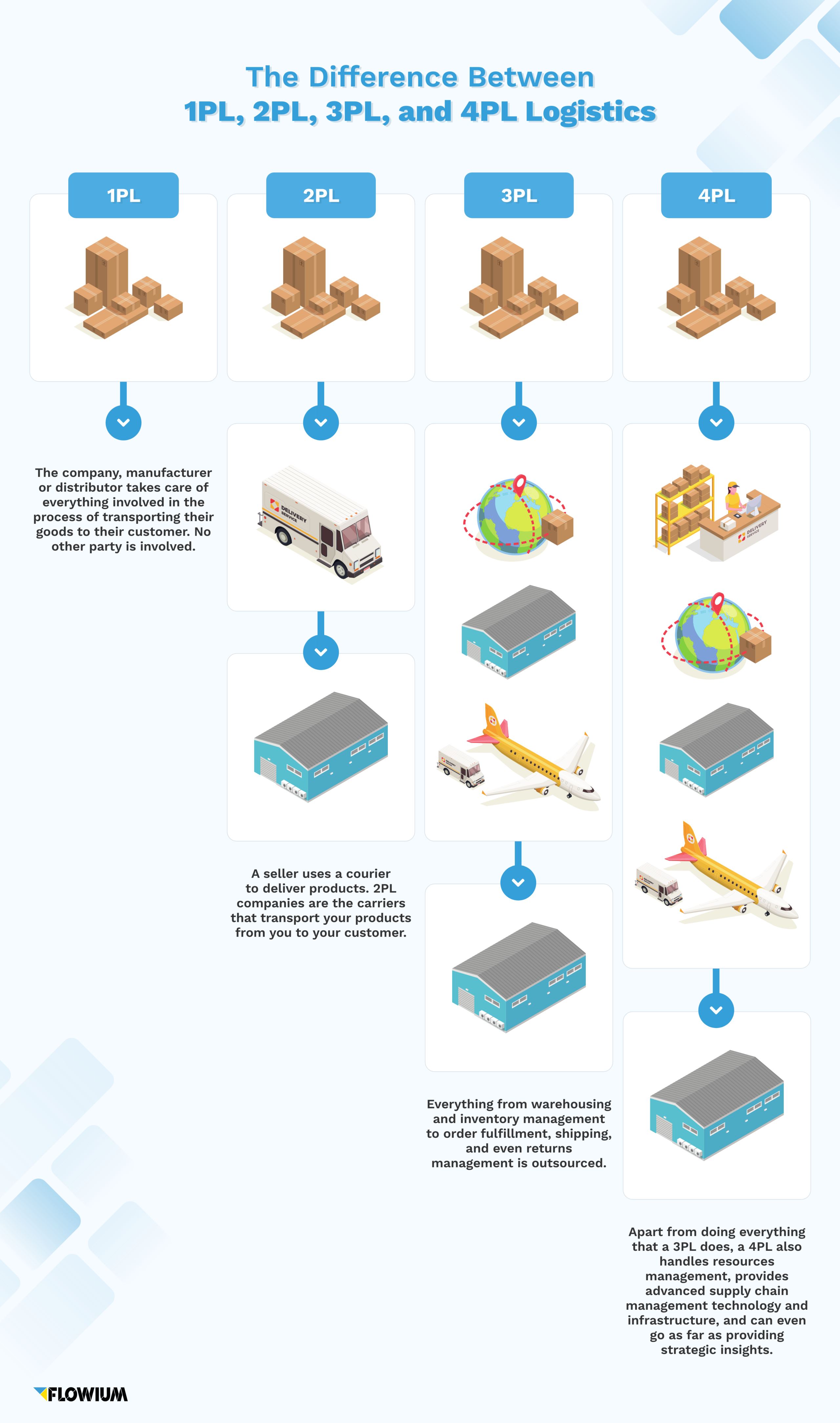
How Does 3PL Work?
Let’s get 3PL explained by exploring the main stages and processes of this supply chain management practice. Knowing how exactly it works can help ecommerce businesses to organize their logistics without missing on any important detail. The entire process of third-party logistics operation can be divided into four main stages. These are the following:
1. Receiving;
2. Picking;
3. Packing;
4. Shipping.
To help you understand the 3PL process better, let’s dive into each stage in more detail.
- Receiving
The most crucial phase in the 3PL fulfillment process is receiving. Your 3PL cannot deliver goods to your customers until they have received your inventory. During this stage, a 3PL receives your inbound products at their fulfillment center and stores them in designated warehouse locations.
- Picking
Once your customers place an order, typically through 3PL software, a dedicated staff member works with your 3PL to retrieve the items from various warehouse locations.
- Packing
After selecting the items, it’s time to package them for shipment. Dedicated employees at your 3PL will choose the best packaging options based on the items’ dimensions and weight. Packaging supplies typically include poly bags, bubble wrap, bubble mailers, boxes, and more. Some 3PLs also offer the option of branded packaging.
- Shipping
Shipping completes the 3PL fulfillment process. Your 3PL handles everything from selecting the most suitable shipping carrier to creating mailing labels. While some 3PLs choose the most economical carrier, others may only work with preferred partners. Once shipped, you’ll receive an order tracking number to share with your customer.
3PL Examples
To give you a more comprehensive understanding, we can take a look at an example of 3PL with FedEx Supply Chain. This company offers services, such as order fulfillment, transportation management, and customized logistics for the healthcare industry, are provided by. FedEx manages intricate supply chains and increases productivity for its customers by utilizing cutting edge technologies.
The general scheme of using the company’s third-party logistics services looks like this:
- FedEx picks up finished products from your business and takes it to a 3PL warehouse.
- The warehouse logs the received products into stock.
- Orders from your ecommerce platforms go directly to FedEx for further order fulfillment.
- FedEx ships the packed products to a distribution facility at the customer’s destination location.
- The company delivers products to your customers.
This 3PL example describes the general steps for the service. Naturally, the flow can differ depending on specific requirements of businesses and manufacturers in different industries and provider companies.
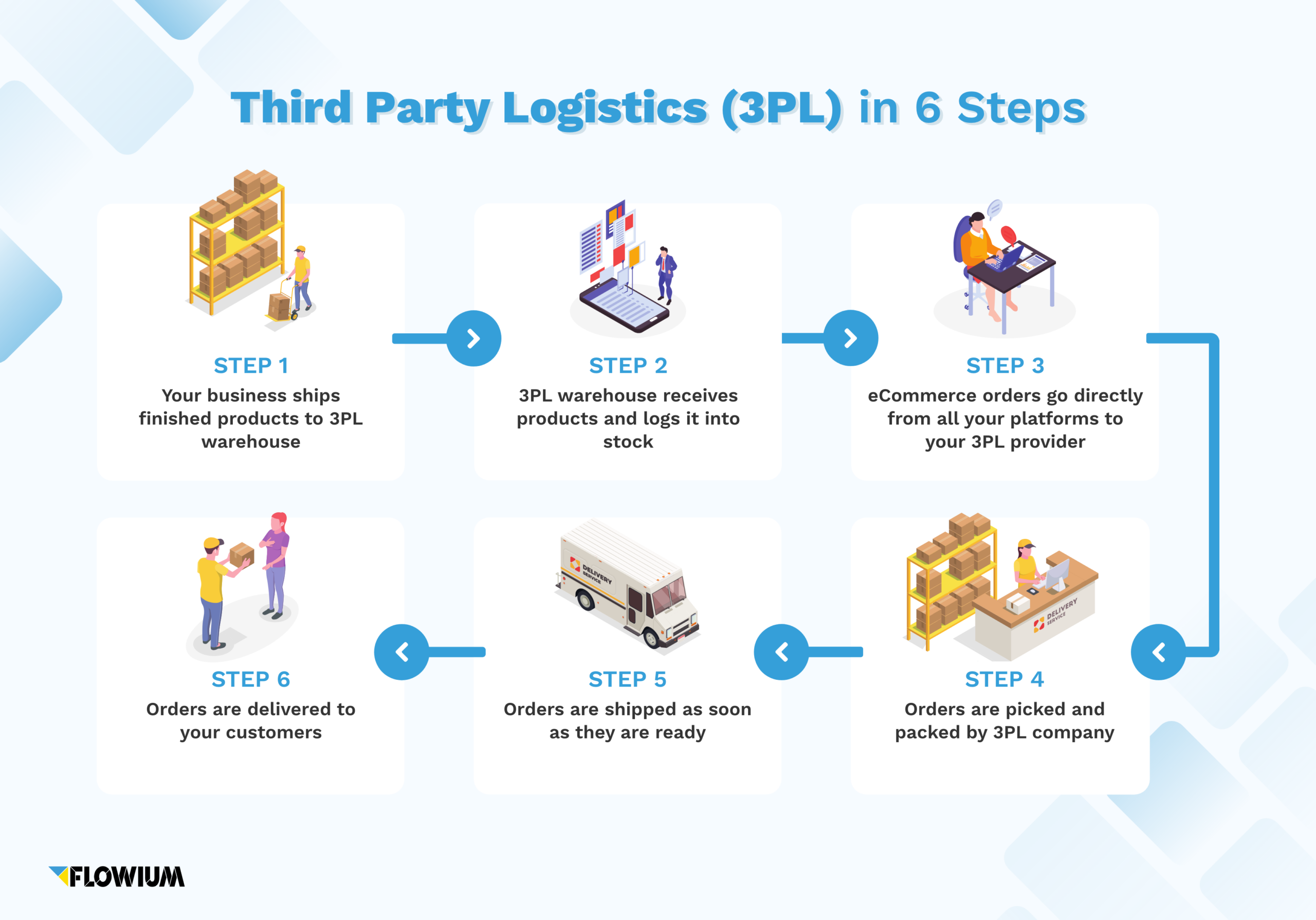
What is a 3PL Provider?
A third-party logistics provider is a company that offers services to businesses by organizing or managing different supply chain tasks. This type of firms offer a range of logistical services, such as storage, distribution, and transportation.
Types of 3PL
Now that you understand how these companies work, let’s explore the different types of 3PLs and their organizations:
- Full-Service Providers
Ideal for ecommerce stores selling internationally, full-service 3PLs offer strategically located warehouses across the globe to minimize shipping costs and delivery times. They store your inventory in multiple locations, ensuring faster and more cost-effective shipping to customers worldwide.
- 3PL Warehouses
These providers are the most common type of 3PL. They store products in their own or leased facilities and ship them directly to customers on behalf of the client. Located near major shipping hubs, 3PL warehouses often offer expedited shipping options, reducing both costs and delivery times.
- Transportation-Based 3PLs
These providers specialize in transporting your products between factories and warehouses. They offer a range of transportation services, including trucking, ocean freight, and air freight, ensuring efficient movement of goods.
- Financial- & Information-Based 3PLs
As your business grows, supply chain complexity increases. Financial- and information-based 3PLs offer advanced services, including consulting, cost control, freight auditing, and cutting-edge inventory management systems, to help manage even the most complex logistics operations.
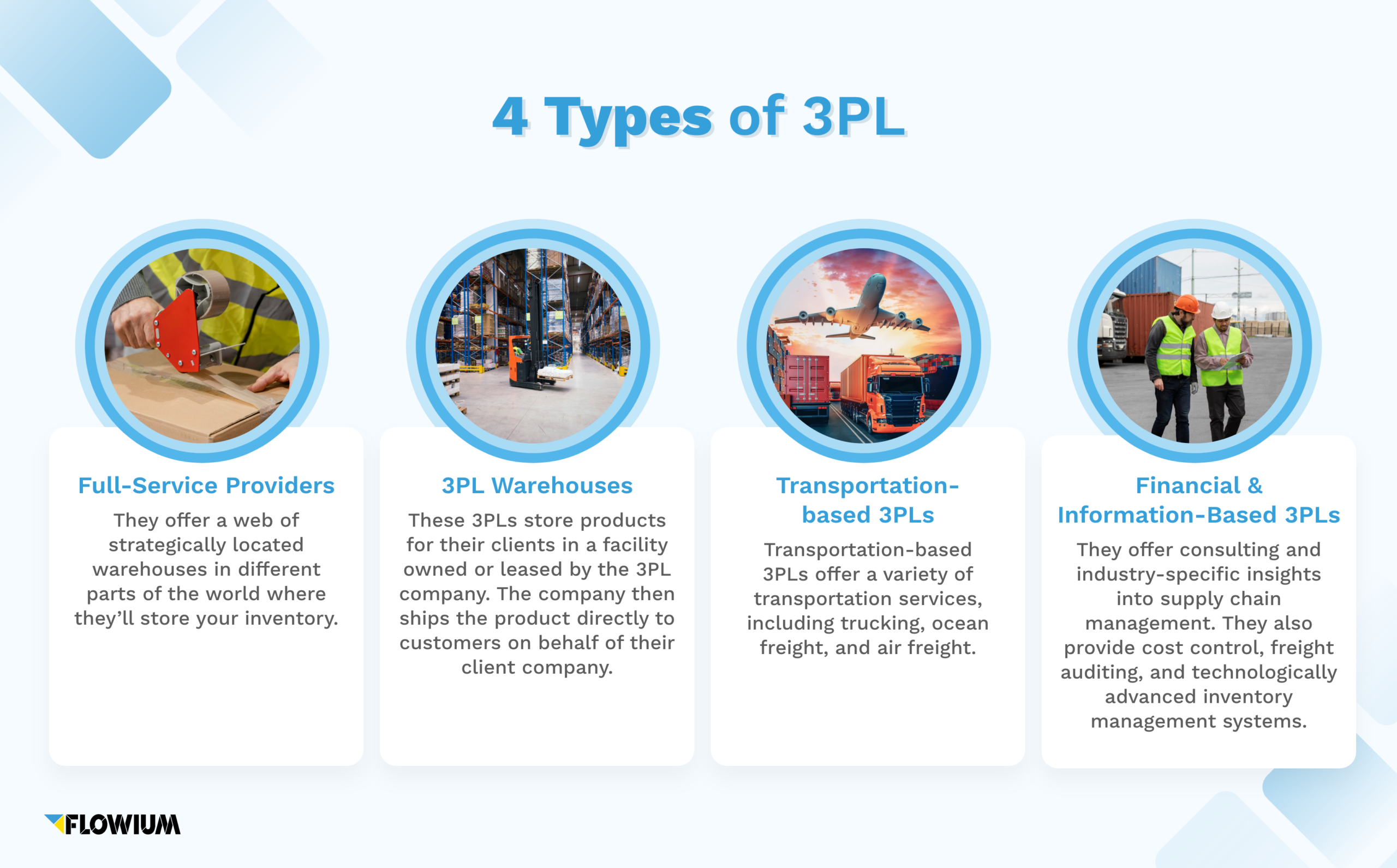
Popular Third-Party Logistics Services
A good 3PL offers a range of services to ensure your products get from the factory to your customer’s door efficiently. Here are the most important 3PL services:
- Warehousing & Inventory Management
3PLs expertly handle and store your inventory in strategically located warehouses, reducing shipping costs and times, especially for international shipments. They also manage inventory using specialized software, which is helpful if your business lacks space or staff.
- Order Management & Fulfillment
A 3PL manages order processing, from receiving orders to picking, packing, and shipping items. They use advanced order management systems (OMS) to analyze sales trends, manage stock levels, and optimize order quantities based on demand.
- Shipping & Distribution
3PLs leverage their network of carriers and facilities to ensure quick and safe delivery of products. Their nationwide warehousing options can significantly reduce transit times.
- Order Tracking
Order tracking allows you to monitor shipments, ensuring timely delivery and addressing any issues promptly. Most 3PLs offer this service at no additional cost.
- Returns & Exchange Management
3PLs handle returns and exchanges, managing reverse logistics and refunds to ensure customer satisfaction even after the sale.
- International Logistics
For businesses shipping globally, 3PLs manage international logistics, providing global warehousing and optimizing inventory levels across locations to ensure product availability while minimizing costs.
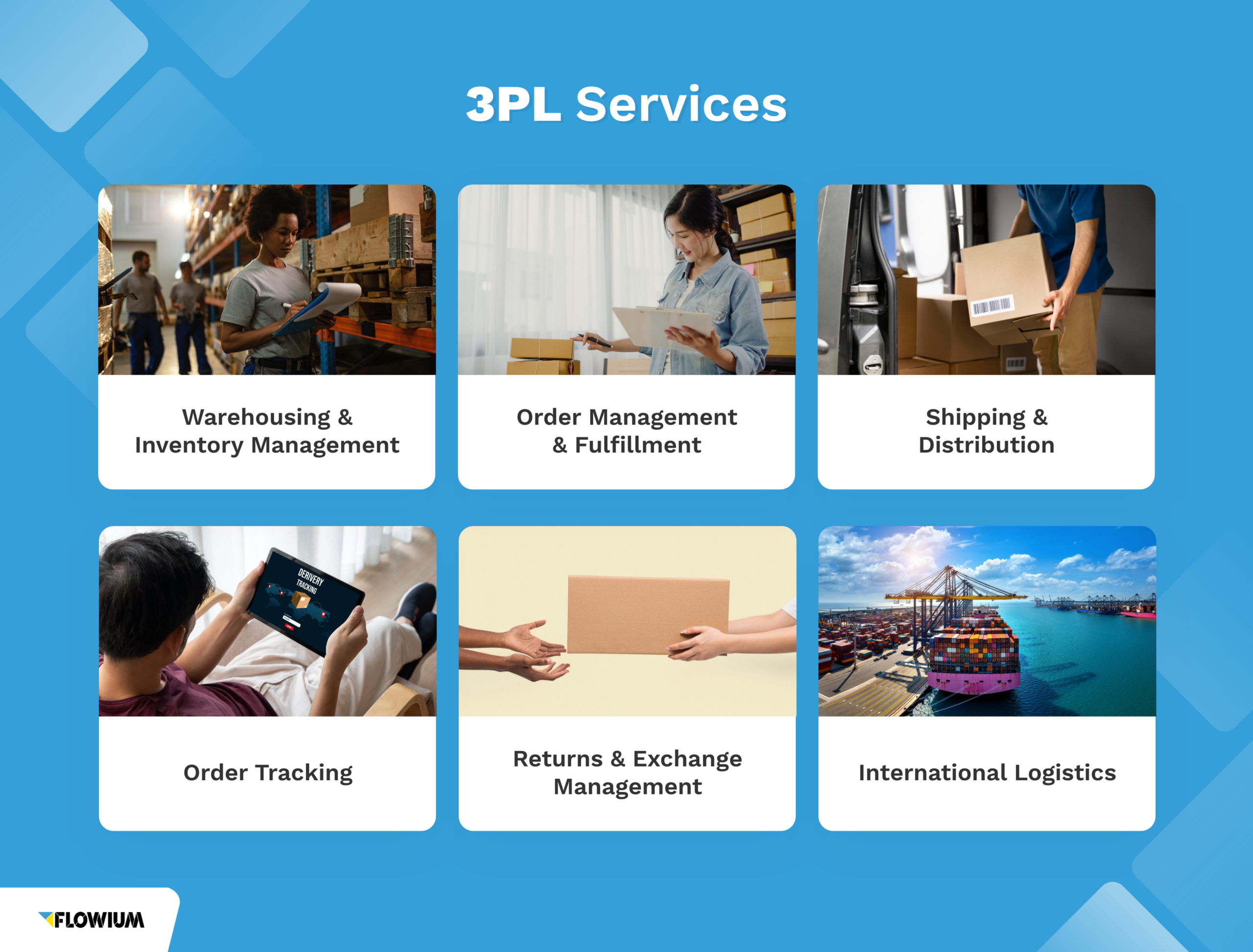
Who Needs 3PL Solutions
Your need for 3PL may stem from a variety of factors. But if any of the following apply to you, it might be worthwhile to outsource third-party logistics:
- Quick Development
Hiring a 3PL will undoubtedly be a terrific answer for you if you’ve been receiving so many orders that you can’t even handle fulfilling them on time. You’ll have a lot less work to do because a 3PL will handle all of your supply chain operations, as they have warehousing facilities and committed employees. In this manner, as your business grows, you can concentrate on offering your clients high-quality services without having to worry about not being able to keep up with the demand.
- Absence of Supply Chain Knowledge
A good reason to use a 3PL for order fulfillment is their lack of experience with the supply chain. Order fulfillment, shipping, and distribution as a whole are intricate and sophisticated logistical games. In the early phases of your ecommerce firm, you might be able to get away with lacking distribution expertise, but eventually, that will stop you from growing. Because of this, it’s a smart decision to entrust a seasoned 3PL provider with your supply chain management, particularly if you intend to continue growing your ecommerce company.
- Lack of Warehousing Space or Qualified Staff
This is the biggest problem that many ecommerce firms have as they expand past their present plateau: a shortage of either. In some circumstances, renting a larger warehouse and employing (and training) more workers may be less expensive in the long run than working with a 3PL. Additionally, since you won’t have to worry about your fulfillment any longer, you’ll have more time to concentrate on other business-related tasks.
Benefits of Third-Party Logistics
Working with a 3PL has allowed many ecommerce companies to grow and scale their operations, something they would not have been able to do otherwise because of supply chain problems, a lack of manpower for picking and packaging, or a shortage of warehouse space.
What are the advantages of hiring a 3PL, then? Let’s examine a handful of them.
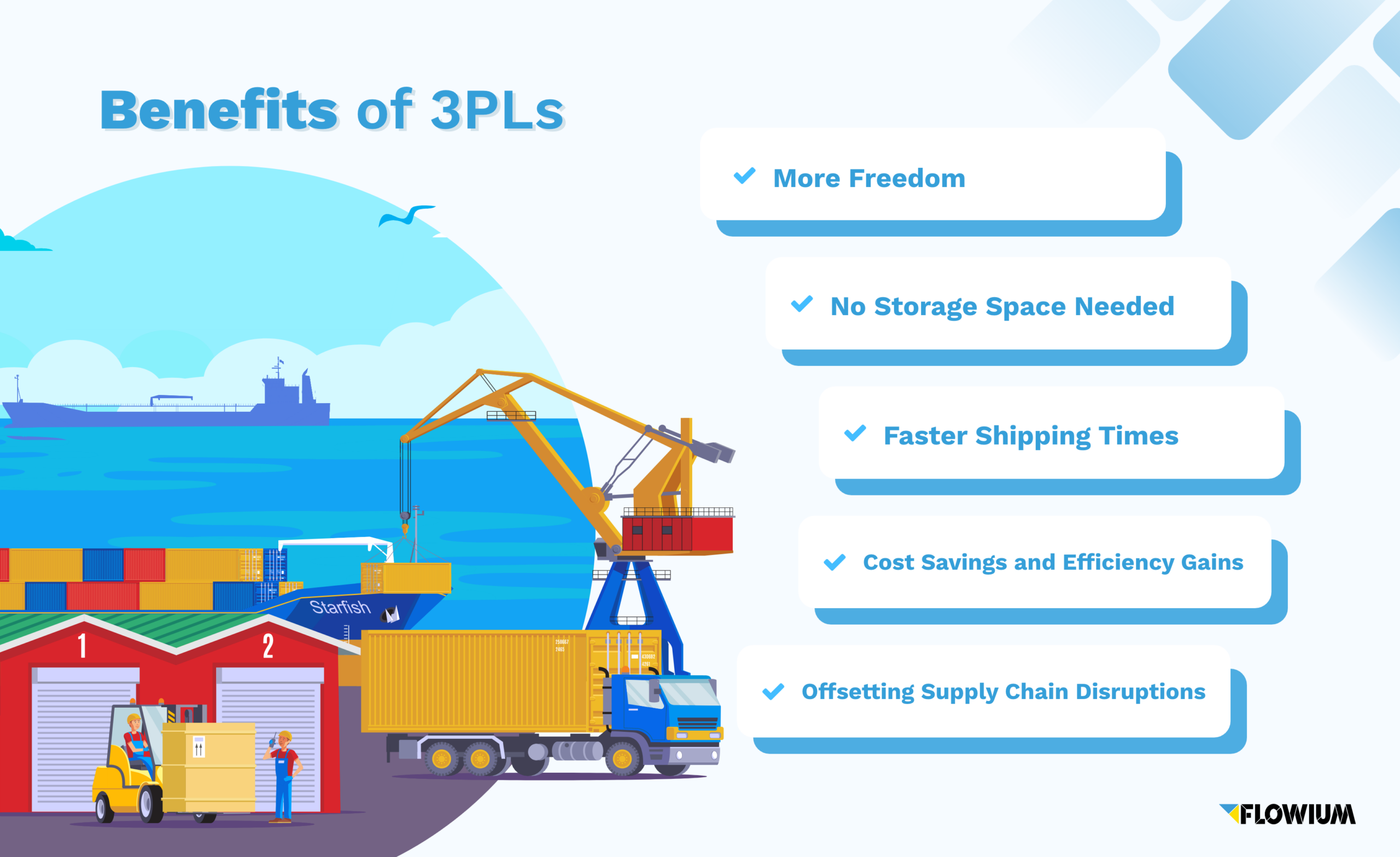
Third-party logistics offer several advantages to ecommerce businesses, helping them grow and scale efficiently. Here are a few key benefits:
- More Freedom
Partnering with a 3PL frees up your time and resources by outsourcing warehousing, picking, packing, and shipping to an expert. This allows you to focus on other vital aspects of your business, like marketing, sales, and customer service.
- No Storage Space Needed
With a 3PL handling warehousing, you no longer need your own storage space. This eliminates costs for extra space and staff, and removes the worry of outgrowing your current facilities.
- Faster Shipping Times
3PLs manage the entire shipping process, leveraging their access to a variety of carriers to ensure faster delivery times than you might achieve on your own.
- Cost Savings and Efficiency Gains
As experts in logistics, 3PLs can save you time and money by optimizing operating costs and improving efficiency. They can also scale with your business, avoiding financial losses or operational disruptions.
- Offsetting Supply Chain Disruptions
A reliable 3PL can handle supply chain disruptions, such as accidents or inclement weather, minimizing their impact on your shipping schedules and customer experience.
How to Choose the Best Third-Party Logistics Provider
Choosing a 3PL provider can be daunting, as it requires a deep understanding of your business needs and expectations. When outsourcing logistics, you’re trusting an external party to deliver your products, so it’s crucial to find a partner who can meet your specific requirements.
Consider the following points:
- Shipping Volume: Your freight volume influences the type of 3PL you need. Smaller shipments may not require a high-end solution, but high-volume businesses should opt for a more advanced 3PL with relevant experience.
- Services: Determine if you need a full-service 3PL for inventory management, picking, packing, and labeling, or if a specialized provider focused on packaging or storage alone would be more economical.
- Delivery Locations & Times: Assess whether your 3PL can meet your delivery requirements, whether it’s next-day delivery within a region or nationwide and global shipping.
- Costs: While outsourcing to a 3PL can reduce expenses and streamline operations, be mindful of additional costs. Choose a provider that fits your budget and aligns closely with your business needs.
When selecting a 3PL provider, it’s important to consider additional services beyond inventory management, warehousing, and shipping. Here’s a streamlined look at key 3PL options:
- Kitting & Customization: Many 3PLs offer packaging services to save time and money, including kitting products for shipment and customizing packaging. Custom labels can also help streamline processes and enhance branding.
- B2B and DTC Fulfillment: If you sell wholesale or through direct-to-consumer channels, look for a 3PL that provides bulk shipping rates and access to multiple carriers, which can reduce costs, especially if you have multiple locations.
- Distributed Inventory: For nationwide or international shipping, a 3PL with distributed inventory capabilities can store products in multiple locations to optimize delivery times and costs. This model reduces shipping expenses and helps avoid out-of-stock situations, which is crucial for maintaining fast delivery times.
- Two-Day Shipping: Fast delivery is a must for many ecommerce businesses. Some 3PLs offer two-day shipping as part of their services, which can prevent cart abandonment due to long delivery times. However, availability and cost may vary between providers.
- Returns Management: Efficient returns management is crucial for customer satisfaction. Look for a 3PL that offers quick and reliable returns processing as part of their services to ensure a smooth experience for your customers.
Average 3PL Costs
To estimate 3PL costs, consider the fees for warehousing, picking, and packing, along with storage per pallet. Here’s an example calculation with the following fees:
- Storage fee per pallet: $2.50/week
- Pick & pack fee: $0.40/unit, capped at $1.20/order
- Receiving fee per unit: $0.25
Given:
- Number of pallets: 10
- Number of orders per month: 500
- Number of units per month: 1,500
The total costs are:
- Storage fee: 10 pallets x $2.50 x 4 weeks = $100
- Pick & pack fee: (500 orders x $1.20) + (1,500 units x $0.40) = $600 + $600 = $1,200
- Receiving fee: 1,500 units x $0.25 = $375
- Total monthly fee: $100 + $1,200 + $375 = $1,675
- Fee per order: $1,675 ÷ 500 = $3.35
Typical third-party logistics costs include:
- Storage: $5-$15 per pallet/month, $0.30-$0.50 per cubic foot, or $1-$2.50 per bin
- Pick & pack: Less than $3 for B2C, $3.75 for B2B
- Receiving: $5-$15 per pallet, $0.25 per unit
- Shipping: Varies by package weight/size
- Label printing: $0.10 per shipment
- Returns: $1-$3.50 per package
Top 3PL Companies
The best 3PL providers are regarded as the pioneers in their field, providing their customers with cutting-edge solutions and superior service. The following are some of the notable 3PL companies, in no particular order:
- DHL Supply Chain and Global Forwarding
- Kuehne + Nagel
- DB Schenker
- Shopify Fulfillment Network
- FedEx Supply Chain
- C.H. Robinson
- UPS Supply Chain Solutions
- XPO Logistics
- ShipBob
- Rakuten Logistics
Final Thoughts
Now that you know what 3PL is, you can entrust third-party logistics providers to oversee your supply chain activities more confidently. 3PL services are used by 90% of Fortune 500 corporations as well as small ecommerce businesses. You can join them to extract the benefits of these practices and advance your business by letting professionals do the heavy lifting and directing your effort at other important processes.
We hope that this article was useful for you and added professional insights to your understanding of ecommerce logistics. In our blog, you can find more valuable information for ecommerce businesses.



